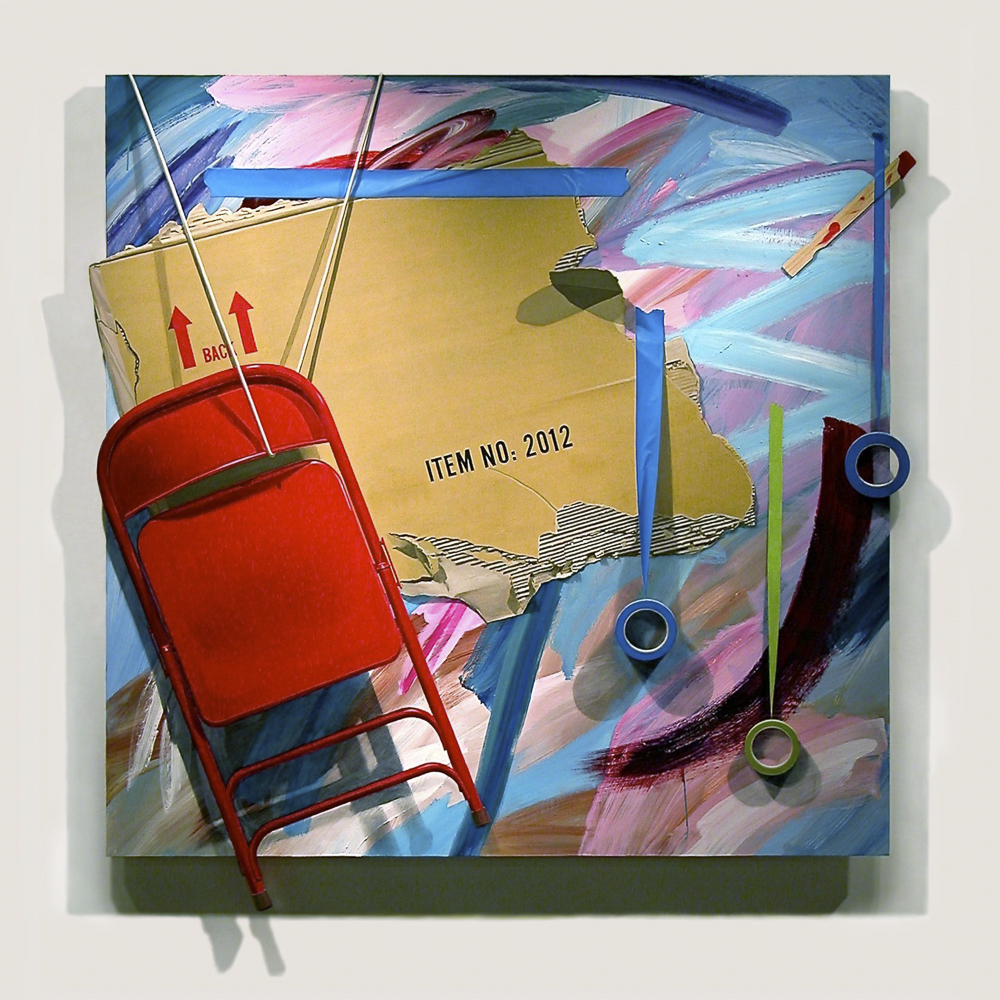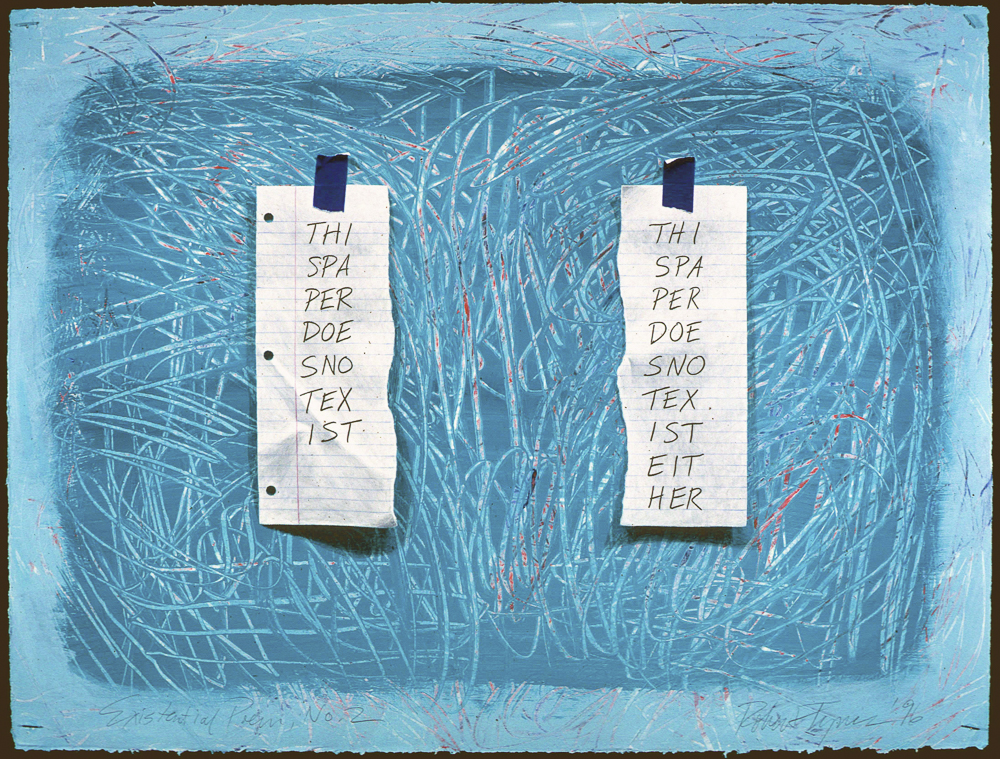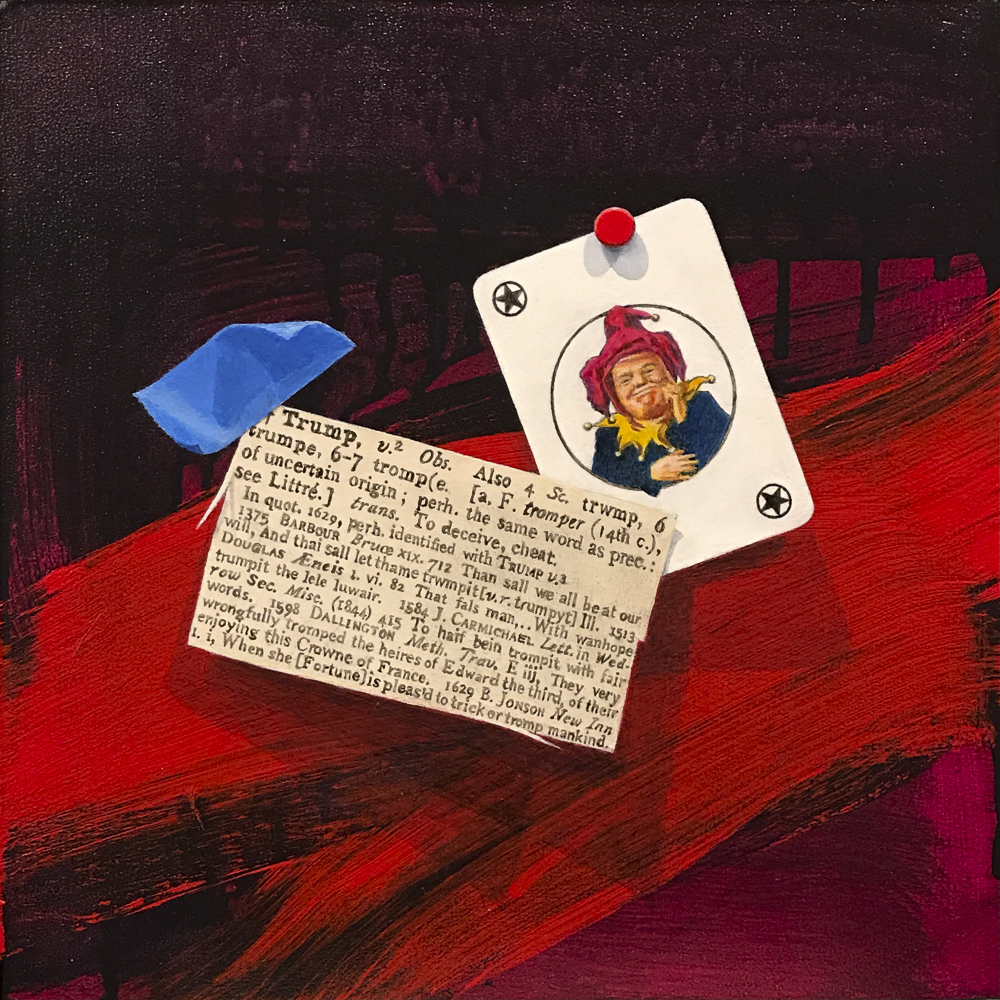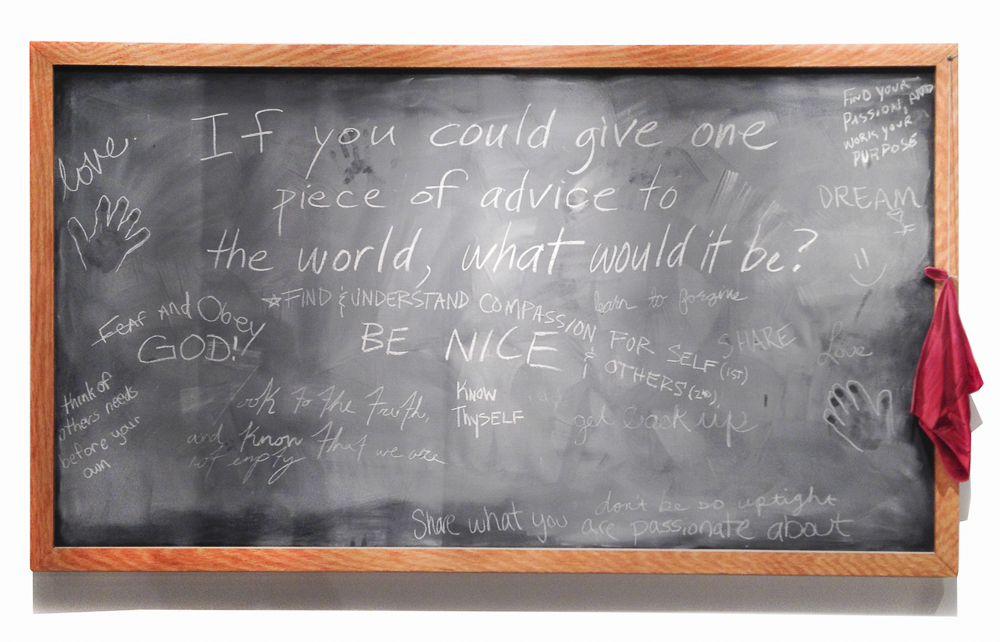Exhibition dates: August 20 - September 8, 2021, S. Tucker Cooke Gallery, Owen Hall, UNC Asheville
Opening Reception: Friday, August 20th from 6 - 8 pm
At the request of the artist, all visitors to the opening reception should be fully vaccinated and masked
This celebratory retrospective of Robert Tynes' career marks his recent retirement after over thirty years of teaching and painting professionally.
During this time, Tynes was a Professor of Art in Drawing and Painting, and spent another twenty of those years as Gallery Director of the Department of Art and Art History's S. Tucker Cooke Gallery.

Back Up Plan, 2008, acrylic and oil on cutout panel, (c. 60 x 60”)
Robert Tynes was born in Chicago in 1953 and spent his formative years in Birmingham, Alabama, with regular summer retreats to the mountains of North Carolina. He received a BA degree in Art from Rhodes College in 1975, graduating with Honors and Distinction in Art. In 1981, he received an MFA degree in Painting from East Carolina University.
Robert Tynes is an artist whose representational skills were apparent at an early age. Like many young artists with strong drawing skills, he formed a strong interest in Surrealism, and began exploring the lines between reality and illusion. This type of work would become a focal point for his undergraduate art studies. Tynes would go on to describe that, “the visual tension that exists in the work reflects the dualities and paradoxical nature of the world as I see it. The paintings can be seen as simultaneously abstract and hyper-realistic, active yet calm, or both contemplative and humorous.” As he continued this line of investigation in graduate school, he began to experiment with trompe-l’oeil painting, a French term meaning “fool the eye.” This unlocked a new visual language for Tynes which he masterfully used to create his more recent works.

Existential Poem, No. 2, 1996, acrylic on paper, (c. 30 x 37”)
To achieve this effect, Tynes skillfully creates loose, abstract, and rhythmic marks which resemble those made with a large paintbrush. These painterly marks often create a non-representational backdrop that is reminiscent of confetti, graffiti, cloth, or water. Over of this backdrop, or rather embedded in it, is a cut-out style collage of objects drawn to hyper-realistic standards of exactness. This layer of his work is technically very different from the other layers. These representational objects include items such as fruit, string, sticks, ribbons, clothes, tape, paper, rulers, photographs, and deconstructed cardboard boxes. These 2-D depictions of 3-D objects, when hung in the right lighting, create a sculptural landscape that fools the eye and magically floats off the wall. Tynes states how, “using large, single sheets of birch plywood as the support, the panels are carefully cut and shaped to create an added effect,” which pushes out towards the viewer. Often these works also physically stretch outside of the conventional squared confines of a canvas or paper, increasing their visual effects. At the end of his process, Tynes stitches together the two opposing qualities of artworks with a unified sense of lights and shadow which becomes perfected in the lighting of a gallery setting on works that range from 10 x 10 inches to around 5 x 5 feet. Throughout his career of painting, Tynes aims to redefine what boundaries mean to the viewer.

Trump L’Oeil Series, No. I , 2016, acrylic on cutout panel, (10 x 10”)
Although Robert Tynes was initially focused on the visual tensions between two fundamentally different styles, he eventually began to deeply consider the philosophical implications of the dichotomies he was visualizing. Rigorous investigation of this aesthetic terrain unavoidably entails a serious inquiry into the nature of reality itself. Consequently, his body of works have developed an equally compelling sense of symbolism, which is often sourced from the contradictions in politics. Tynes’ works contain objects such as newspaper articles, photographs, or objects that are strongly associated with historical events or locations. The way these objects interact in and around the picture plane greatly influences the viewers’ interpretations of the artwork’s meaning. The political dimension of his art reflects real-world concerns shared by many. However, his observations of these topics do not lie in the heart of politics but rather the psychology of perception.
Throughout his career as an artist and educator, Tynes has been honored with numerous awards, grants, and fellowships. He also is the recipient of several prestigious artist-in-residence grants including two from the Roswell Museum and Art Center, New Mexico in 1985 and 1991; and one in 1986, from the Ucross Foundation in Wyoming. Additionally, he has completed several large-scale commissions including DoubleTree Hotel, Kansas City, MO; IBM, Field Engineering Headquarters, Atlanta GA; and the Convention Center, Charlotte, NC. Tynes' work has been exhibited in over twenty-five solo exhibitions and over one hundred and fifty group exhibitions, and his paintings are included in several significant public and private collections including the Greenville Museum of Art, Greenville, NC; The Roswell Museum and Art Center, NM; The Hawaii State Foundation on Culture and the Arts, Honolulu, Hawaii; The National Arts Club, New York, NY.
~ Dylan Mintz, Recipient of the 2021 - 2022 UNC Asheville Student Curatorial Fellowship

Tabula Rasa, 2013, acrylic on cutout panel, (c. 48 x 87”)
